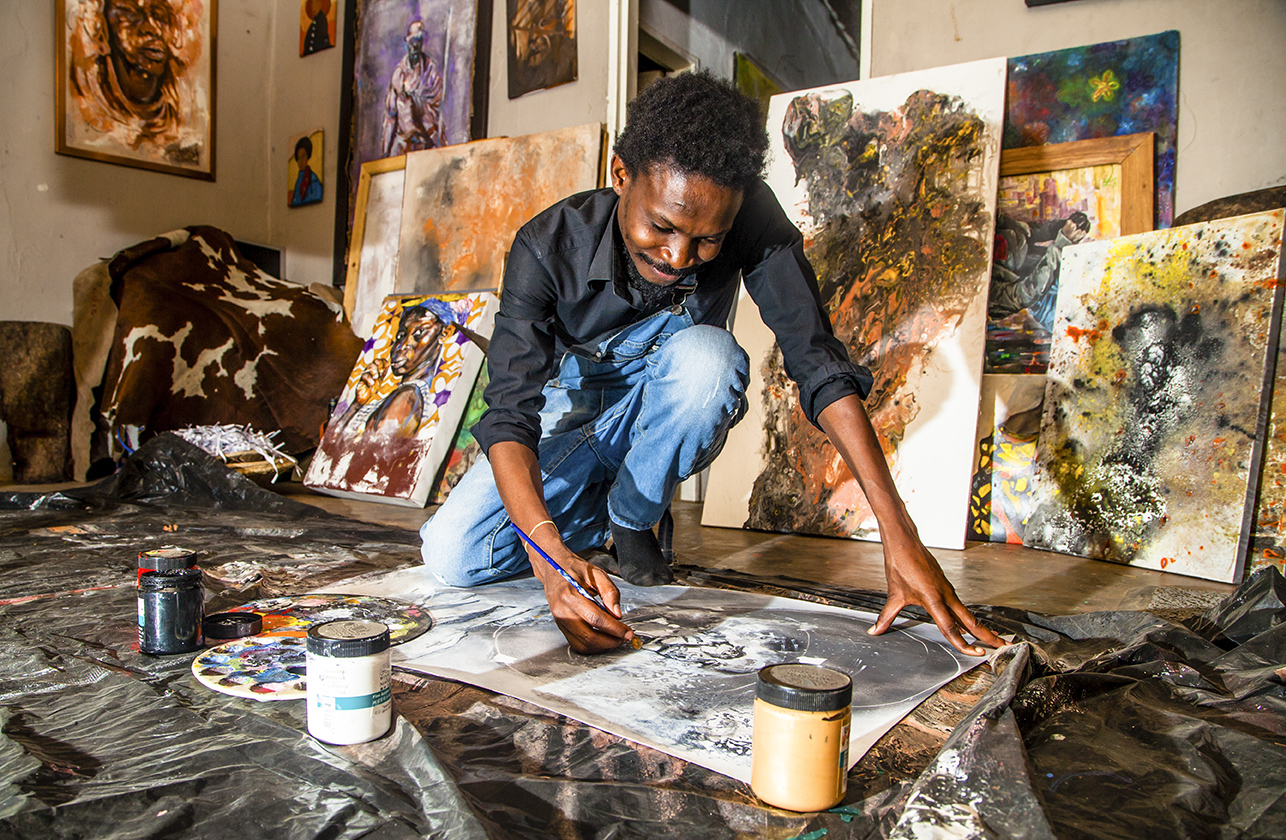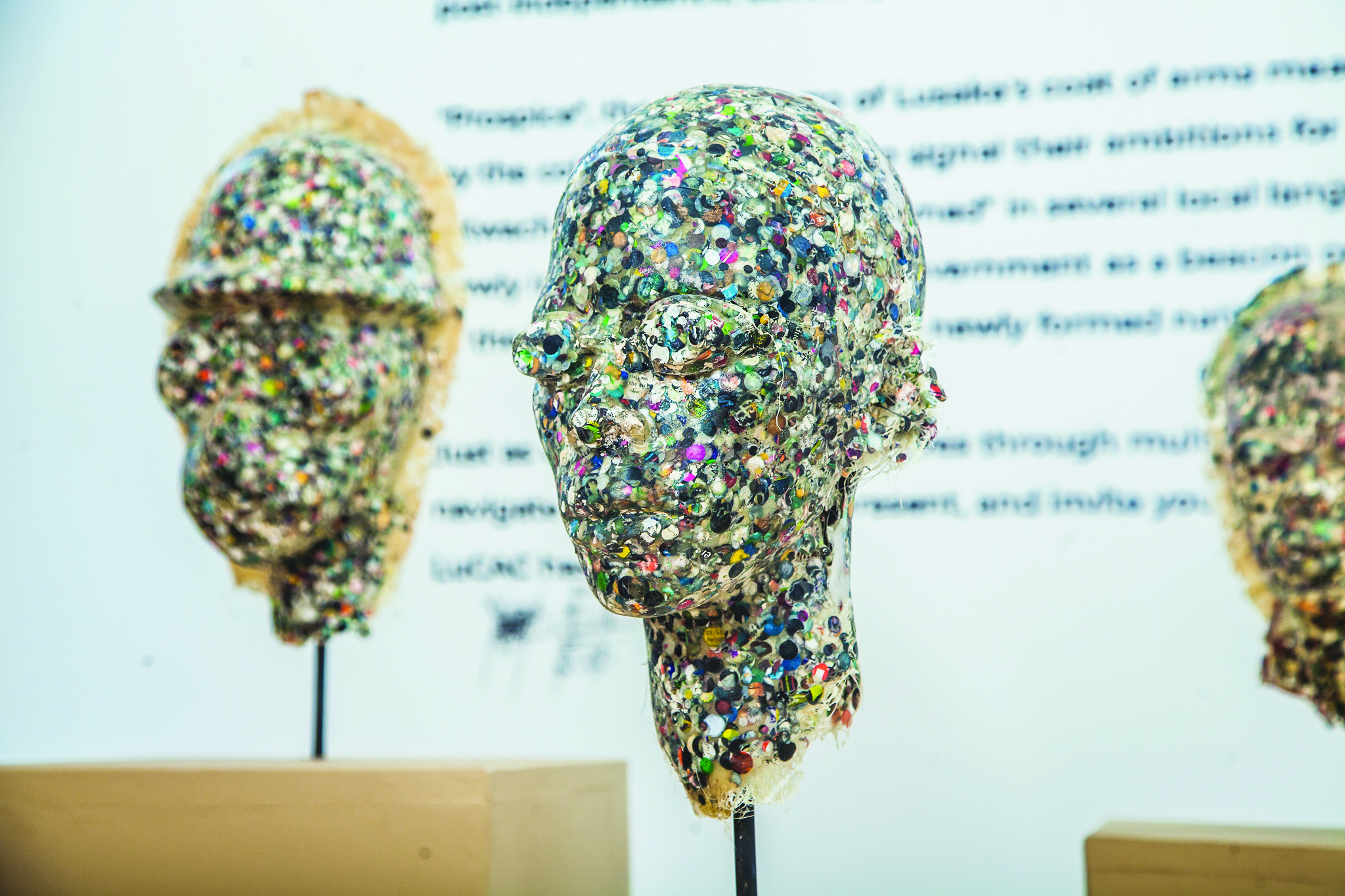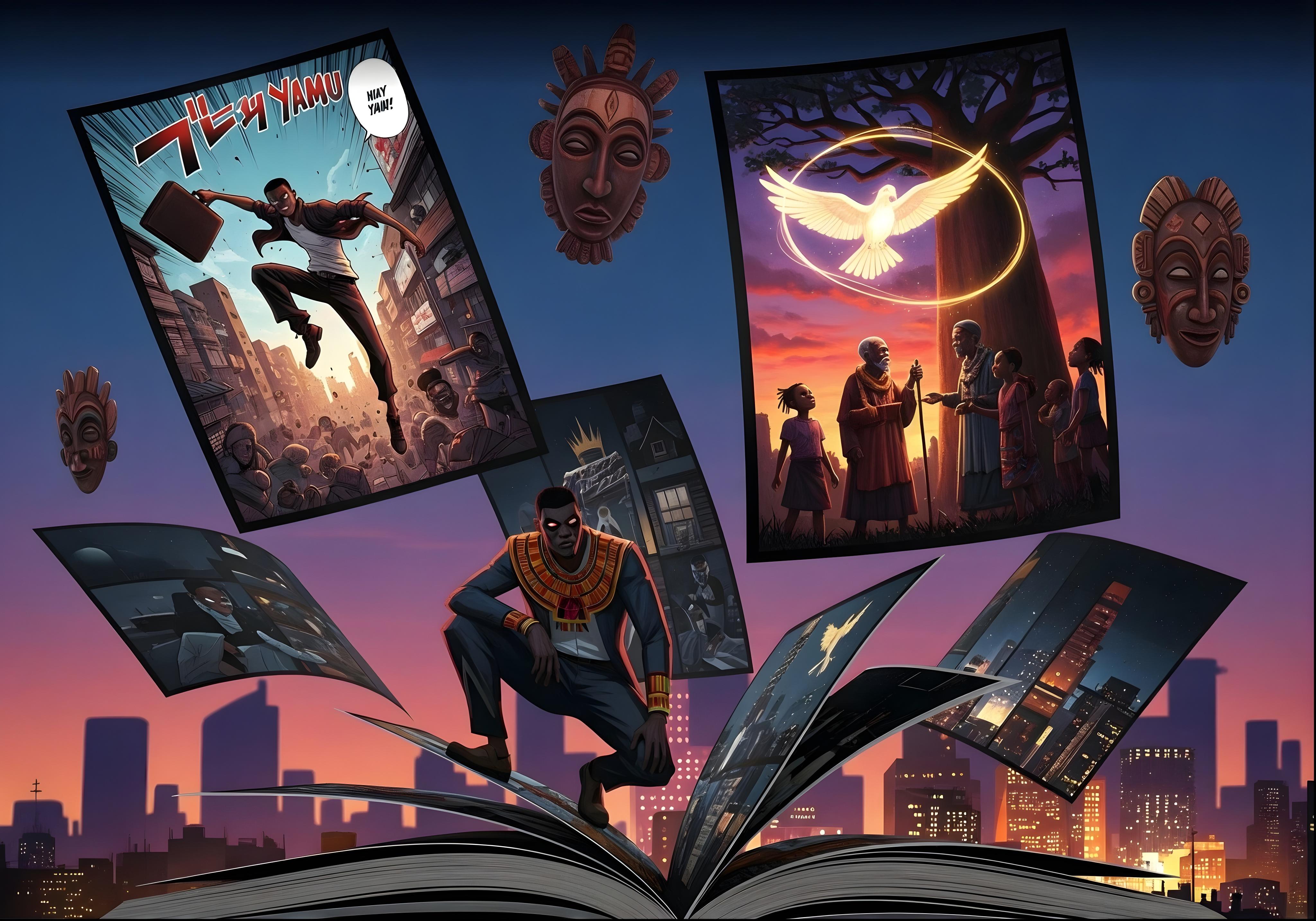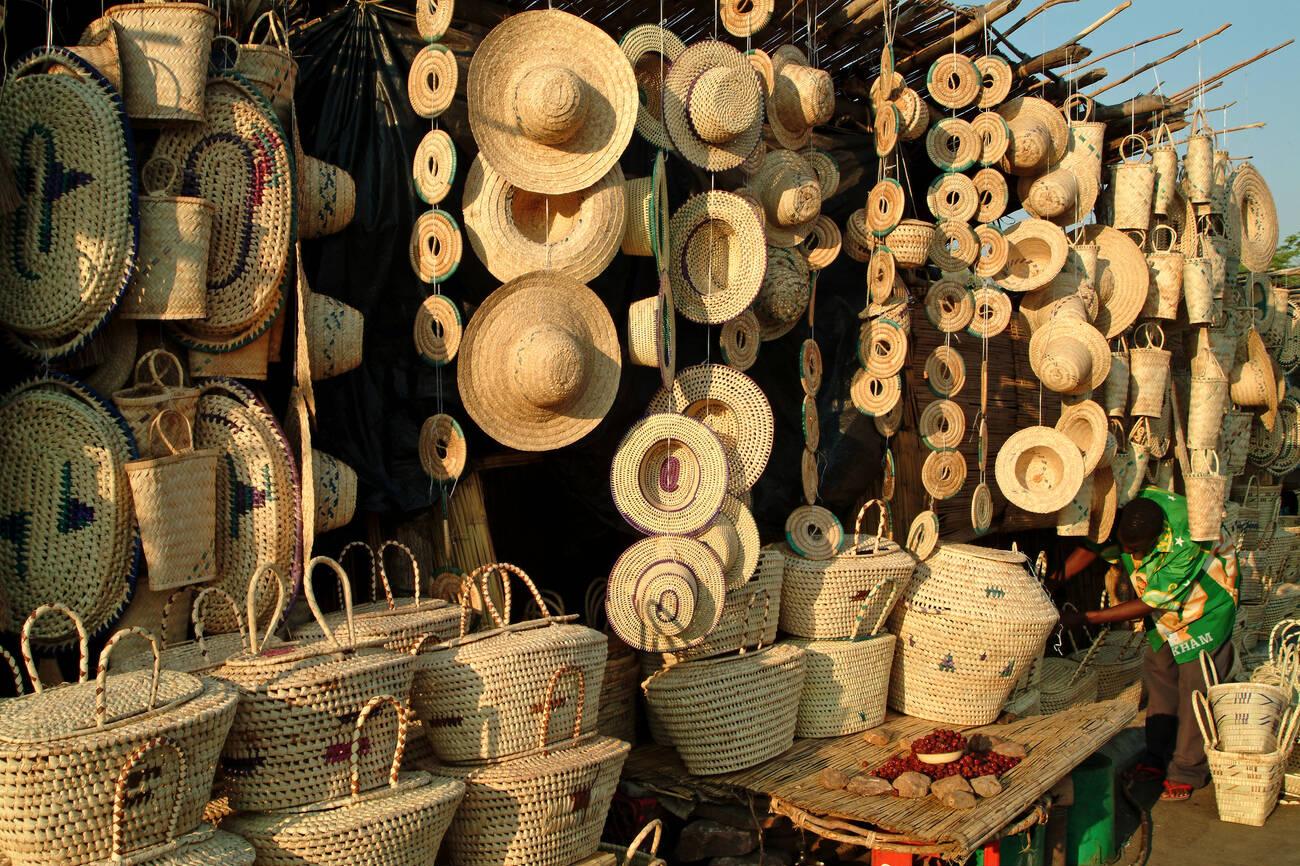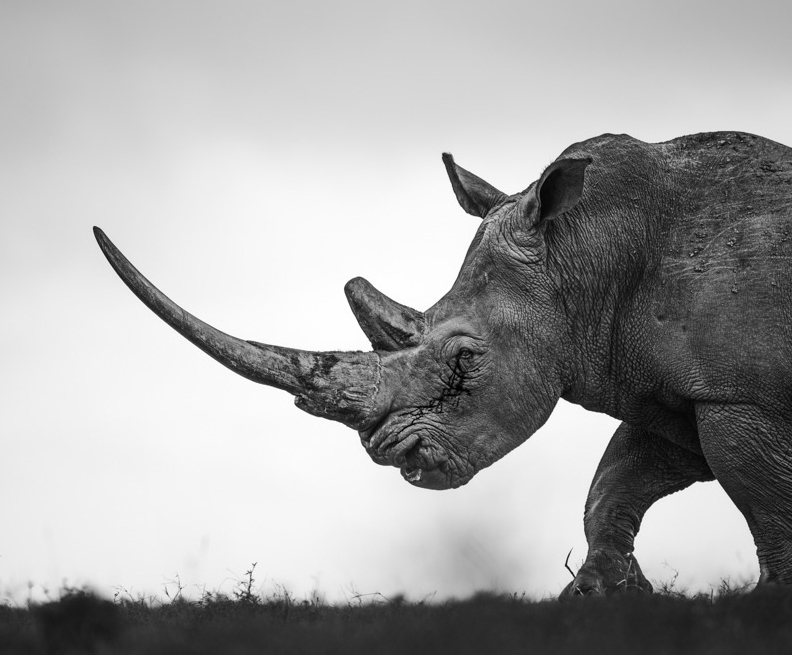Hurriedly taking pictures at his apartment cum art studio in Lusaka west, Isaac Kalambata is calm and accommodating as we conduct our interview.
There are various eye-catching pieces of art on display and I couldn’t help but wonder what inspired them. He explains that he is in the middle of preparing art works for his upcoming exhibition whose main focus will be Zambia’s mythological creatures.
Isaac poses in front of his work
“I realised we don’t have a lot of information about our deities and I wanted to bring that out in my own way. We need to be custodians of our own stories; I struggled a great deal to actually find information and had to have a book printed for me for reference. So these art works are my representation of what I think these deities would look like and I’m hoping they will make a big impact during my exhibition.”
Isaac’s always been creative and reminisces about his artistic journey as he shows me an old sketchbook.
“I started as an illustrator, I would create comic strips of African super heroes as I imagine them.” One of the characters is El Neguri, a scorned deity who finds himself on earth among humans and finds appeasement from performing in front of crowds. It’s clear his fascination with Zambian mythology has developed over many years.
“It’s the representation of ourselves, which gives us our identity. I just try to visualize our folklore characters, give them a face so they can stick in our heads, so we can know where we’re coming from. All these stories have been around for ages, but no one is documenting them and I think part of who we are is dying with it because we don’t know that narrative. I think that’s why the movie Black Panther was so huge for Africans, we finally had something that represented us, even if it’s a comic book character.”
Egged on by curiosity, I wander off to a corner that’s filled with brightly coloured, rolled up paper paintings, eager to see what I’ll find on them. I am delighted with my first find; a futuristic looking painting of an African woman Isaac calls “Stellar.”
He goes on to explain that he tries to bring out elements of the past and future in his work. “If you don’t know your past, how can you keep track of your progress? You can’t project the future when you are in the present with no direction of where you are going or what you’re supposed to achieve.”
Towards the end of our visit I eye another painting in his kitchen, which leads me to micheiveiously ask him what his work would it taste like if it were edible. “It would taste like fish; it has a rawness to it, its organic, its real and alive and fresh.”
The conversation gets deeper and we find ourselves talking about balance and harmony and how he believes those two are important. “I consider myself a gatherer; gatherers will take what they need knowing that the plant from which they have taken will replenish itself. So there’s a balance in the system. I believe in balance and harmony in a lot of things.”
We step out of the apartment, lighting equipment in tow, and are met by a delightfully raw view of his farm; rows of sprouting vegetables, which we somehow missed before. There’s a breeze rustling the leaves in the trees nearby and I think to myself that the tranquility is why he chose to live here in the first place. Almost as if he read my mind, he tells me that that’s one of the things that constitutes his perfect day.
“Like a breeze, I just go with the flow when I work. I don’t feel like I need to redo any piece and I’m just going with the creative process.”
ISAAC’S EXHIBITION IS SLATED FOR THE 13TH OF JULY AT THE LUSAKA MUSEUM AND MOVES ON TO LIVINGSTONE THEREAFTER.
